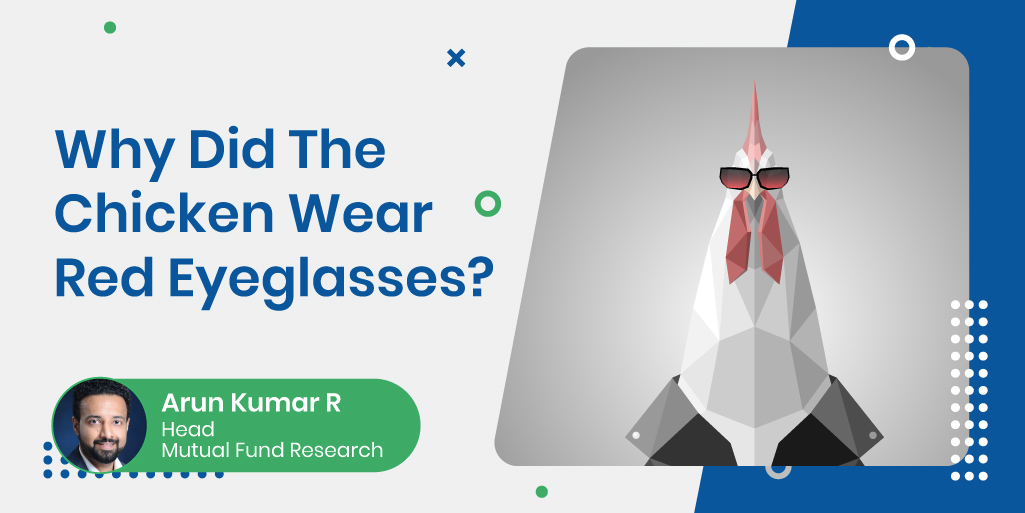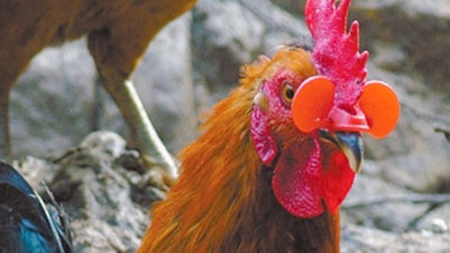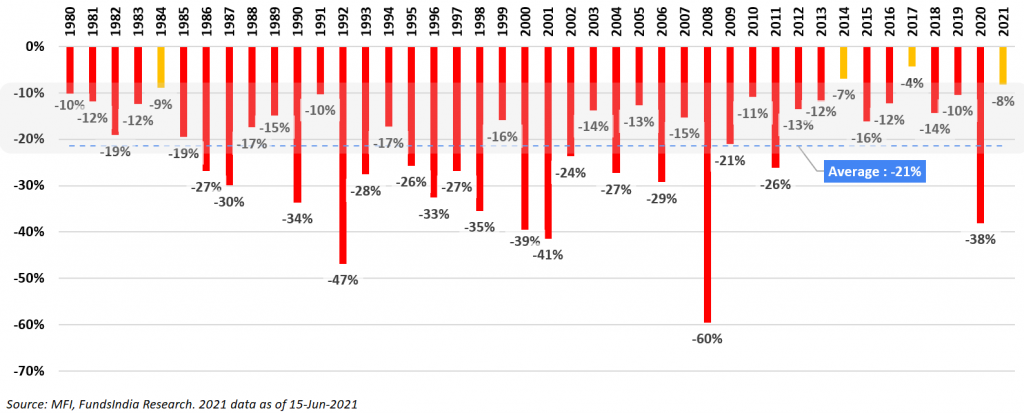
This article was originally published in LiveMint. Click here to read it.
In the early 1900s, chicken farmers had a major problem. Their chickens were killing each other!
The chickens had a tendency to attack their housemates by pecking away at an injured bird’s feathers, devouring its flesh and eventually killing the attacked bird. Once a chicken was wounded, a strange thing happened. The sight of blood encouraged the entire flock to peck at the injured one, leading to an inevitable death.
How did they solve this problem?
They made their chicken wear red eyeglasses!
The insight was simple.
The sight of red colored blood intensified the pecking instinct in chickens. The red eyeglasses tricked the chicken from seeing the red color of the blood, thus reducing pecking and even cannibalism.
Suddenly, each one became a good neighbour with a rosier outlook!
Now what does this have to do with investing?
While the equity markets tend to deliver over long periods, it has its own version of red blood every year – the scary temporary declines.
Sample this…
The chart below shows the largest fall recorded during each year for the Sensex i.e the fall from the highest index value to the lowest index value during the year.
As seen from the red bars, equity markets had a temporary fall each and every year.
You read it right. There was not a single year where the markets did not have a temporary fall.
Similar to the chicken, most of us have this tendency to peck at our portfolios (trying to time the markets by moving out and in) at the first signs of red in our equity portfolios.
As with the attacked chicken, we all know what happens to our portfolio returns in the end.
What if we had a similar pair of metaphorical red eyeglasses?
These red eyeglasses based on history simply let us know that…
A 10-20% temporary fall is almost a given every year.
Inevitably there is always some new bad news leading to these temporary falls each and every year. While every fall looks like the start of a large market crash, more often than not, as seen above, it’s just the usual 10-20% temporary decline.
Assume, once we wear the new metaphorical red lens, the 10-20% temporary decline that occurs almost every year, becomes invisible when it comes to our portfolio decisions.
Rather the new lens allows us to ‘unsee’ these temporary declines by enduring them as a fee to be paid for long term returns and lets us peacefully continue with our long term asset allocation.
But what about those large market crashes?

Using history as a rough guide, once every 7-10 years, equity markets have seen sharp temporary falls of 30-60%. While the historical pattern may or may not repeat, this is a reasonable expectation to have.
A 10-20% fall would be considered as normal equity market volatility and requires no major action. However if there is a larger fall which our metaphorical lens won’t be able to see beforehand, it is better to be prepared with a preloaded-plan to take advantage of the crash without panicking.
Prepare a ‘Bear Market’ plan
Pre-decide a portion of your debt allocation (say Y) to be deployed into equities if in case market corrects
- If Equity Market Falls by ~20% – Move 20% of Y into equities
- If Equity Market Falls by ~30% – Move 30% of Y into equities
- If Equity Market Falls by ~40% – Move 40% of Y into equities
- If Equity Market Falls by ~50% – Move remaining portion from Y into equities
*This is a rough plan and can be adapted based on your own risk profile, preferences and goals
Summing it up
Instead of perennially worrying that every 10-20% decline might become the big one, the new metaphorical lens can help us accept and endure this as the normal temporary declines to be expected every year.
Further, if the temporary decline becomes more severe, we are also prepared with the preloaded-plan to take advantage of the not-so-frequent market crashes and convert it into an opportunity.
This simple thought process of accepting, enduring and taking advantage of temporary declines can help us stick to our asset allocation plan and let compounding work its magic over the long term.
Are you wearing your metaphorical red eyeglasses?









